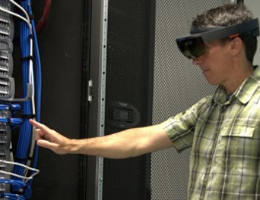How Automated Infrastructure Management is showing its human side
We see it in the movies, we read it in novels. Humans are being replaced by machines.
Whether it is Philip K Dick’s advanced androids or Mary Shelley’s homemade monster, it’s generally held in popular culture as inevitable that technology will outpace humans, making us redundant in the process.
This is why many discussions about automation – especially automated IT tasks – centre on the technology involved. But this is a rather narrow view, and anyone involved with AIM (automated infrastructure management) will notice that most discussions about its implementation boil down to very human considerations. Here are four ways that the AIM conversation is centred on flesh and blood rather than ports and patch cables.
1. It’s all about getting more out of people
What is the ultimate aim of AIM? In the smart buildings that house the smartest corporations, networks are being built to optimize the effectiveness of the people within it. They are often the most expensive part of any enterprise and, as most business leaders are keen to trumpet, their most prized asset. So, the technology exists to get the most out of them; if the supporting network infrastructure is to be constantly available, and supporting the high-bandwidth applications these people need, we need efficient management systems like AIM. Not for the sake of technology’s, but for that of the people. Sure, we have IoT, but right now it is the internet of people that matters most.

2. The demographics of the data center
The end product of all this tech is to empower people. But the network doesn’t work without a degree of highly expert human input. One of the key objectives of AIM development is to enable data centre technicians to be more efficient. One fascinating recent development is the use of augmented reality to guide technicians – arrows, information and datapoints that pop up when they peer into the mess of cables. AIM already knows what to do: AR makes that knowledge visible to humans.
3. The pandemic people factor
The recent pandemic has highlighted human frailty - and with it, human importance. One of the most important recent restrictions has been to remove the need for human travel. Innovations such as AIM are therefore essential during a pandemic – and desirable in the long term as we look to reduce costs and carbon footprint by removing physical travel. It’s not just safe, it’s smart.
4. Do your own thing
However, the big driver behind developments in AIM is that technology has freed people to make their own technology choices.
In a world where remote working is demanding more independence, where self-starters are thriving, individuality is flourishing. We choose for ourselves how we communicate and what devices we use. We all have preferred tech habits, and there is a myriad of ambitious and innovative app development companies encouraging us.
Large corporate organizations may try to standardize, but they also know that the growth of BYOD is inevitable and AIM is the only possible way of accommodating the heterogenous mix of devices and apps. Companies value individual flair and ambition and therefore tolerate BYOD – but only if there is something like AIM to keep it manageable.
Thinking for ourselves
AIM is all about software-driven automation, but at CommScope we don’t think it exists for its own sake but to make people operate more effectively. Those organizations who take a human-first approach to AIM deployment, and consider the people-focused benefits before the tech-centred management methods, will be the ones who get most from it.
AIM: the Fact File
Get a deep dive into how Automated infrastructure management (AIM) systems enable real-time monitoring and management of connectivity across an entire network.




